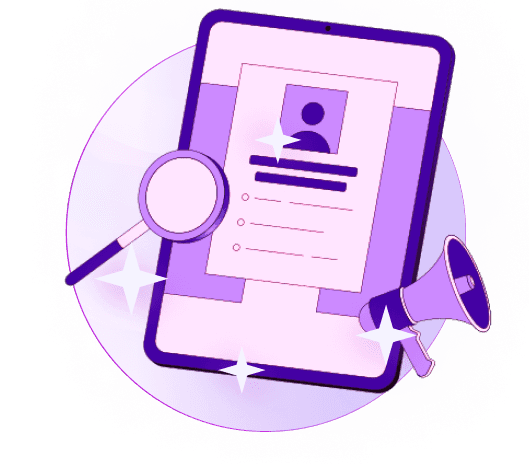Blogs
Articles

Data Enrichment Techniques: How to Enhance Your Contact Data Effectively
A surprising 49% of marketers don't trust their company's data quality. Data Enrichment Techniques provide a solution to these systemic problems that prevent businesses from reaching their full potential.
Quality and accessibility of data matter more than quantity in today's data-centered economy. Sales teams waste valuable time researching leads instead of connecting with them. This substantially reduces productivity and revenue generation.
This piece will show you effective data enrichment techniques that can turn your contact data from simple to brilliant. You'll learn how to improve your datasets for streamlined processes and better customer targeting. These methods will help you join companies that use enriched data to make better decisions and gain competitive advantages.
What is enriched data and why it matters
Enriched data forms the backbone of business intelligence in our data-centric marketplace. Data enrichment adds supplementary information from reliable third-party sources to existing data. This process combines first-party contact information and purchase metrics with context like demographic, psychographic, and behavioral information.
Enriched data plays a crucial role in modern business. Research shows 88% of organizations that make use of information keep up with customer needs and market trends. The significance becomes clear as data enrichment grew by 80% in 2018 alone.
Data enhancement vs data enrichment explained
Data enhancement and enrichment play different roles in your data strategy, though people often confuse them:
Data enhancement makes existing data better. Your team cleans, standardizes, and updates datasets to remove inaccuracies or inconsistencies. This internal process fixes errors, eliminates duplicates, and keeps your database reliable.
Data enrichment adds new external information to your dataset. Rather than just cleaning what you have, enrichment adds valuable context that turns simple information into detailed intelligence.
When to use enhancement vs enrichment
The right timing for each strategy will give you the best results:
Data enhancement works best with incomplete or outdated databases. You need it to comply with regulations about current customer records or before launching targeted marketing campaigns that need reliable data.
Data enrichment helps you learn about customers through external sources. It proves valuable when you create individual-specific experiences or expand into new markets that need more context.
The best approach uses both processes in order. Start by cleaning and standardizing your existing data through enhancement. This creates a solid foundation. Then apply enrichment techniques that add depth and viewpoint. The result is an accurate and detailed database ready for strategic decisions.
Core Data Enrichment Techniques
Data enrichment techniques are the foundations of turning simple contact information into practical business intelligence. Let's look at the key methods successful organizations use to get the most value from their data.
Appending missing fields from external sources
Data appending adds essential information to sparse contact records from reliable third-party sources. This simple technique turns basic data like email addresses into complete profiles by adding phone numbers, job titles, social profiles, and purchase history. Organizations can fill important information gaps without asking customers for more input.
Forward appending adds details to existing contact records when companies have names but need more information. This gives businesses a full view of potential customers and creates opportunities for targeted communication.
Behavioral and intent-based enrichment
Behavioral data enrichment shows what customers actually do instead of what they say they'll do. This method tracks online activities, content consumption, and brand interactions to show true purchase intent. Intent data helps determine a prospect's readiness to buy by analyzing their position in the buying cycle.
Sales teams can time their outreach better by spotting buying signals through website visits, email engagement, and product usage patterns. Companies that use behavioral enrichment see up to 40% better lead qualification.
Geographic and demographic enrichment
Geographic enrichment adds location data like postal codes, cities, and regional boundaries. Companies can identify market opportunities through regional trend analysis and run targeted location-specific marketing campaigns. Demographic enrichment builds customer profiles with socioeconomic factors like age, gender, income, education, and marital status. These techniques enable hyper-local promotions based on weather or local events that create individual-specific customer experiences.
Technographic and firmographic enrichment
Technographic data shows which applications, operating systems, and devices customers use. Companies can assess technological sophistication and target technology-related products more accurately. Firmographic enrichment adds organization details like company size, industry, revenue, and business model.
B2B companies' sales teams find these insights valuable to customize their approach based on company-specific needs. The combination of firmographic and technographic data creates powerful account-based marketing opportunities.
Predictive enrichment using machine learning
Predictive enrichment uses machine learning to spot patterns across datasets and predict customer behavior or priorities. This approach creates individual treatment responses based on pre-randomization features. Organizations can develop signatures that predict customer responses to different treatments using algorithms like XGBoost and feature selection tools.
Machine learning also enables continuous data verification instead of point-in-time updates. Customer data stays fresh without manual work, which maintains accuracy throughout the customer lifecycle.
How to Implement Enrichment in Your Workflow
Data enrichment needs a step-by-step approach to boost your contact data's value. These five key steps will help you get the best results from your enrichment work.
Step 1: Audit your existing contact data
Start with a full picture of your current database. Look for gaps, inconsistencies, and outdated information that might hold back your marketing and sales efforts. HubSpot's research shows about 30% of a business database deteriorates each year. Your enrichment strategy needs clear goals that point out which fields in your contact records need improvement.
Step 2: Clean and standardize your database
Clean your data before enrichment by removing duplicates, fixing errors, and making formats consistent. Remove ineligible records - especially when you have personal email addresses like Gmail or Yahoo, since these can't be enriched. Make sure phone numbers, addresses, and other key information follow the same format so new data blends naturally.
Step 3: Choose the right enrichment tools
Your data enrichment tools should have:
Data accuracy and reliability
Integration capabilities with your existing tech stack
Compliance with regulations like GDPR
Verification methods (preferably combining AI and human verification)
Check if your CRM already has built-in enrichment features before you buy separate tools.
Step 4: Integrate enrichment into your CRM
Link your enrichment tool directly to your CRM system to create a smooth data flow. Decide whether to replace existing data or just fill empty fields. Set up automatic triggers for enrichment based on new contacts, updated records, or engagement patterns. Tools like Persana can make this integration process quick and simple.
Step 5: Monitor and update enriched data regularly
Data enrichment needs ongoing attention. Update active contacts every 30-90 days. Keep track of data quality through bounce rates and wrong phone numbers. Your system should automatically refresh records monthly as new information becomes available.
Top Tools and Platforms for Data Enrichment
The data enrichment marketplace provides many solutions to companies that want to boost their contact records. Your success depends on finding platforms that match your needs.
Overview of popular data enrichment platforms
ZoomInfo guides the market with its complete B2B intelligence platform that uses AI-powered enrichment for contact, company, and intent data fields. Other excellent options include Clearbit (immediate enrichment), Apollo.io (enrichment plus engagement tools), and Cognism (GDPR-compliant data). Each platform brings its strengths—from Seamless.AI's immediate contact finding to People Data Labs' developer-friendly APIs.
Using Experian data enrichment for B2B contacts
Experian helps businesses add up to 900 data elements to their existing customer records. Their enrichment services verify basic contact information first, then add financial data, buyer propensity, and automotive data. This integrated approach helps companies rank leads by purchase likelihood and get better marketing ROI.
Benefits of waterfall enrichment systems
Waterfall enrichment processes contact data through multiple verification sources one after another until it finds needed information. This method delivers great results pushing match rates from 50-60% to 80% or higher. It also slows data decay, cuts costs on multiple vendors, and delivers complete data.
How AI and automation improve enrichment accuracy
AI-powered enrichment reshapes CRM data management through automated validation and cleaning. Companies that use AI enrichment see 30% fewer data inaccuracies. Sales teams also see up to 40% productivity gains while their sales cycles become 40-50% shorter.
Persana offers innovative solutions that make these processes smoother.
Conclusion
Data enrichment sets companies apart - those that just collect information versus those that truly understand their customers. Without doubt, companies that use reliable enrichment strategies gain the most important competitive advantages through deeper insights and targeted outreach.
The trip from simple contact information to complete customer intelligence needs both enhancement and enrichment to work together. You should clean your existing data and expand it with external sources that add context and depth. The right mix of techniques - whether appending missing fields, analyzing behavioral patterns, or implementing predictive models - depends on your business goals.
Note that data enrichment isn't a one-time project but an ongoing commitment. Your contact data stays accurate and valuable over time through regular audits, consistent maintenance, and updates. Your chosen tools should blend naturally with existing systems while following relevant regulations.
Companies that focus on data quality through systematic enrichment see remarkable improvements. Their sales cycles become shorter, conversion rates increase, and customer's experiences become more tailored. Your investment in data enrichment affects bottom-line results across marketing, sales, and customer service teams.
A clear path exists: audit your current data, implement suitable enrichment techniques, pick the right tools for your needs, and stick to regular maintenance. This approach will help you turn simple contact information into a strategic asset that improves business decisions and strengthens customer relationships.
Key Takeaways
Transform your basic contact data into powerful business intelligence with these essential data enrichment strategies that can boost lead qualification by up to 40% and reduce sales cycles significantly.
• Start with data enhancement before enrichment - Clean and standardize your existing database first, then add external information to build comprehensive customer profiles
• Implement waterfall enrichment systems - Use multiple data sources sequentially to achieve 80%+ match rates compared to typical 50-60% from single sources
• Focus on behavioral and intent-based data - Monitor actual customer actions rather than stated preferences to identify genuine buying signals and optimize outreach timing
• Automate regular data updates - Schedule enrichment every 30-90 days for active contacts since 30% of business databases deteriorate annually without maintenance
• Choose AI-powered enrichment tools - Leverage machine learning platforms that integrate seamlessly with your CRM to reduce data inaccuracies by 30% and boost sales productivity by 40%

Create Your Free Persana Account Today
Join 5000+ GTM leaders who are using Persana for their outbound needs.
How Persana increases your sales results
One of the most effective ways to ensure sales cycle consistency is by using AI-driven automation. A solution like Persana, and its AI SDR - Nia, helps you streamline significant parts of your sales process, including prospecting, outreach personalization, and follow-up.



